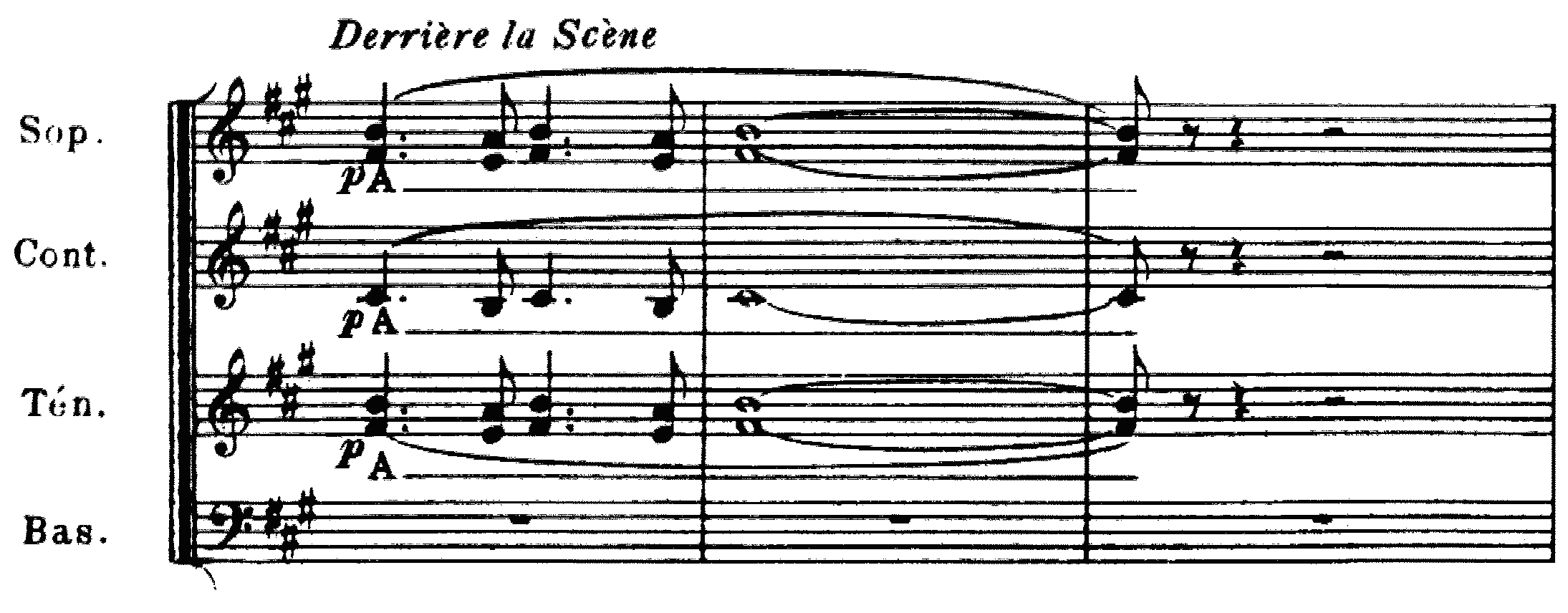Dramatic Vocalise Database
Maurice Ravel (1875–1937)
Daphnis et Chloé (1912)
Maurice Ravel also became interested in vocalization during the period following the premiere of Debussy’s “Sirènes.” In 1907 he composed the Vocalise-étude en forme de habanera as a test piece for students at the Paris Conservatoire. According to Rollo Myers:
[The work] seems to have been commissioned for the purpose of initiating students at the Paris Conservatoire into contemporary music. In it Ravel displays his skill in writing for the voice and his knowledge of its potentialities. Over his favorite Habanera rhythm in the piano the vocalist is called on to execute all kinds of trills and rapid scales, with staccato and portamento effects and other devices providing plenty of material for technical display.1
Two years later, in 1909, Ravel would follow up this clear example of the vocalise-étude tradition with a two-piano arrangement of Debussy’s “Sirènes.” In addition, it was in this same year that Ravel received a commission that would lead to the creation of Daphnis et Chloé. The piano-vocal score of Daphnis et Chloé was arranged for piano and chorus by the composer himself.
Ravel was occupied with the composition of Daphnis et Chloé between 1909 and its premiere in 1912. As the composer himself remarked:
My intention in writing it was to compose a vast musical fresco, less concerned with archaism than with faithfulness to the Greece of my dreams, which is similar to that imagined and depicted by French artists at the end of the eighteenth century. The work is constructed symphonically according to a very strict tonal scheme by means of a few motifs; their development assures the work’s symphonic homogeneity.2
Ravel’s symphonic conception closer aligns this ballet to Debussy’s symphonic “Sirènes” rather than to previous stage works that included dramatic vocalization.
At the very opening of this symphonie choreographique, as Ravel himself called it, a series of superimposed fifths from lower to upper strings, con sordino, provides a background similar to that at the opening of “Sirènes,” or Schmitt’s “Les enchantements sur la mer” from La Tragédie de Salomé, op. 50 (1907). At measure 6, the entrance of stopped horns seems reminiscent of these earlier pieces as well.

Ravel, Daphnis et Chloé, mm. 5&ndaash;7
3And yet it is the entrance of the offstage chorus, echoing the horn motive, that takes the idea of Debussy’s influence beyond mere circumstantial resemblance.

Ravel, Daphnis et Chloé, mm. 8–10
4One could even propose that the horn/chorus motive in Ravel’s Daphnis is nothing more than a modified retrograde version of Debussy’s initial Siren motive.
(Nauman 2009, 101–3)
Examples | Comments |
| Daphnis et Chloé (opening) |
Footnotes
1 Rollo Myers, Ravel: Life and Works (New York: T. Yoseloff, 1960), 133–34.
2 Roland-Manuel, “Une esquisse autobiographique de Maurice Ravel,” La Revue musicale (December 1938): 17–23; partially reprinted in English as “An Auto-biographical Sketch by Maurice Ravel” in A Ravel Reader, ed. Arbie Orenstein (New York: Columbia University Press, 1990), 31.
3 Maurice Ravel, Daphnis et Chloé (New York: Dover, 1989), 1.
4 Ibid., 2.